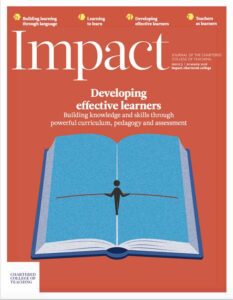Using metacognition as a tool to improve learning
Written by: Lisa Cook

4 min read
Note: The author of this article, Lisa Cook, works for Challenging Learning, an organisation offering chargeable support, training and consultancy services to schools on a range of topics including metacognition.
‘The ability to critically analyse how you think’ or ‘thinking about one’s thinking’: these two definitions best capture how I understand metacognition.
Metacognition was a key strand to the development of thinking skills in classrooms, promoted by the Secondary Strategy and groups such as the Northumberland Thinking for Learning Innovation Unit. Of interest to educational researchers for more than 40 years, this remains a hot topic for education, and I am curious as to why it seems to be so elusive in our classrooms.
As a secondary history and politics teacher, I valued using thinking tools and encouraged my pupils to see them as transferable, bu
Join us or sign in now to view the rest of this page
You're viewing this site as a guest, which only allows you to view a limited amount of content.
To view this page and get access to all our resources, join the Chartered College of Teaching (it's free for trainee teachers and half price for ECTs) or log in if you're already a member.
This article was published in May 2018 and reflects the terminology and understanding of research and evidence in use at the time. Some terms and conclusions may no longer align with current standards. We encourage readers to approach the content with an understanding of this context.
0
0
votes
Please Rate this content
Please login to comment
0 Comments
Oldest
Newest
Most Voted
Inline Feedbacks
View all comments










